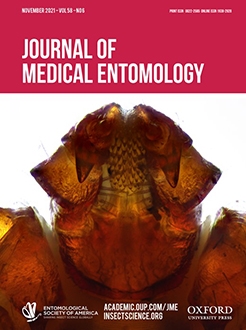Tick-borne illnesses have been on the rise in the United States, with reported cases up sharply in the past two decades. In this literature review, we synthesize the available research on the relationship between vegetation and tick abundance for four tick species in the northeastern United States that are of potential medical importance to humans. The blacklegged tick (Ixodes scapularis) (Say; Acari: Ixodidae) is found to be positively associated with closed canopy forests and dense vegetation thickets, and negatively associated with open canopy environments, such as grasslands or old agricultural fields. The American dog tick (Dermacentor variabilis) (Say; Acari: Ixodidae) has little habitat overlap with I. scapularis, with abundance highest in grasses and open-canopy fields. The lone star tick (Amblyomma americanum) (Linnaeus; Acari: Ixodidae) is a habitat generalist without consistent associations with particular types of vegetation. The habitat associations of the recently introduced Asian longhorned tick (Haemaphysalis longicornis) (Neumann; Acari: Ixodidae) in the northeastern United States, and in other regions where it has invaded, are still unknown, although based on studies in its native range, it is likely to be found in grasslands and open-canopy habitats.
How to translate text using browser tools
3 June 2021
Effect of Vegetation on the Abundance of Tick Vectors in the Northeastern United States: A Review of the Literature
Daniel C. Mathisson,
Sara M. Kross,
Matthew I. Palmer,
Maria A. Diuk-Wasser
ACCESS THE FULL ARTICLE
It is not available for individual sale.
This article is only available to subscribers.
It is not available for individual sale.
It is not available for individual sale.

Journal of Medical Entomology
Vol. 58 • No. 6
November 2021
Vol. 58 • No. 6
November 2021
Amblyomma americanum
Dermacentor variabilis
Haemaphysalis longicornis
Ixodes scapularis





